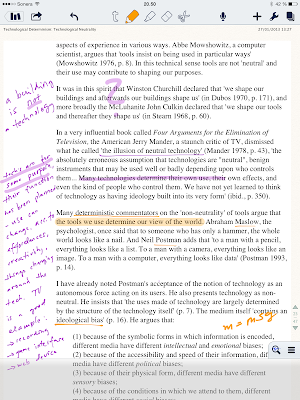What does it mean to be alive? What does it mean to be self-conscious? Are my friends missing me?
Robbie – a short film by Neil Harvey – transposes the fundamental human questions onto Robbie, the narrator and the voice of the monologue of the film.
Robbie is a NASA robot that was built in 2011 and who got self-awareness in 2032 when NASA refurbished his CPU.
The story departs from ordinary sci-fi when we learn that in 2045 something drastic happened and Robbie lost all contact to Earth and to his friends. After that he has been wondering what happened. Why was he left alone to the space station? Are his astronaut friends missing him?
Now Robbie's battery is low and he's about to turn into sleep mode. Some 6,000 years have passed as he has been orbiting the Earth.
The story succeeds in getting me emphatic for Robbie. Albeit his logic board is only a programmed AI, his story tells about feelings, about thoughts, and about curiosity – emotions that are in the core of being human.

Mimicking it for the learning's sake
Remember when Tamagotchi came around? Those little gadgets small kids took so intensely care of in their heyday.
The story of Robbie and nurturing Tamagotchis have a similarity that says something about defining what is (trans)human. In both cases we project our own feelings to stuff around us. We form relations with objects and deal with them as if the feelings were mutual.
A very similar reaction happens when one is "discussing" with Eliza chatterbot. When Eliza recognizes certain words in your sentence, it replies with choosing one of the pre-written answers.
This psychological transference can be utilized in many ways in eLearning, too. For example in the virtual world Second Life we coded a biology teacher-bot that requested avatars who came nearby to watch an educational video, and started to examine what the avatar-student had learned.
Of course it was pre-programmed, and a very elementary and robust use of the Stimulus-Organism-Response model, but it succeeded in arousing feelings of a human relationship, which in turn triggered emotions and led to a more meaningful experience of learning.
 |
| Chatterbot teaching biology in the Second Life. |












